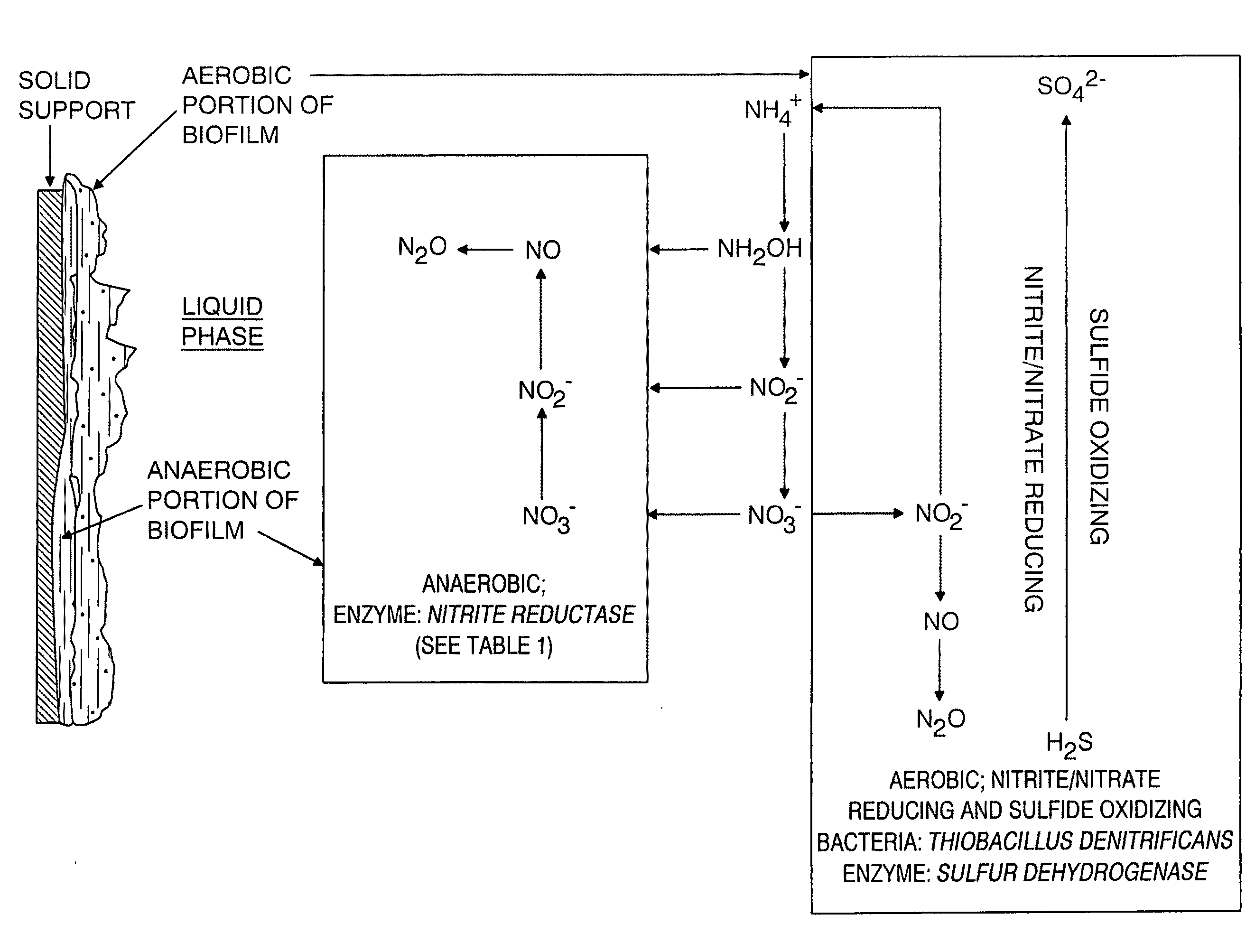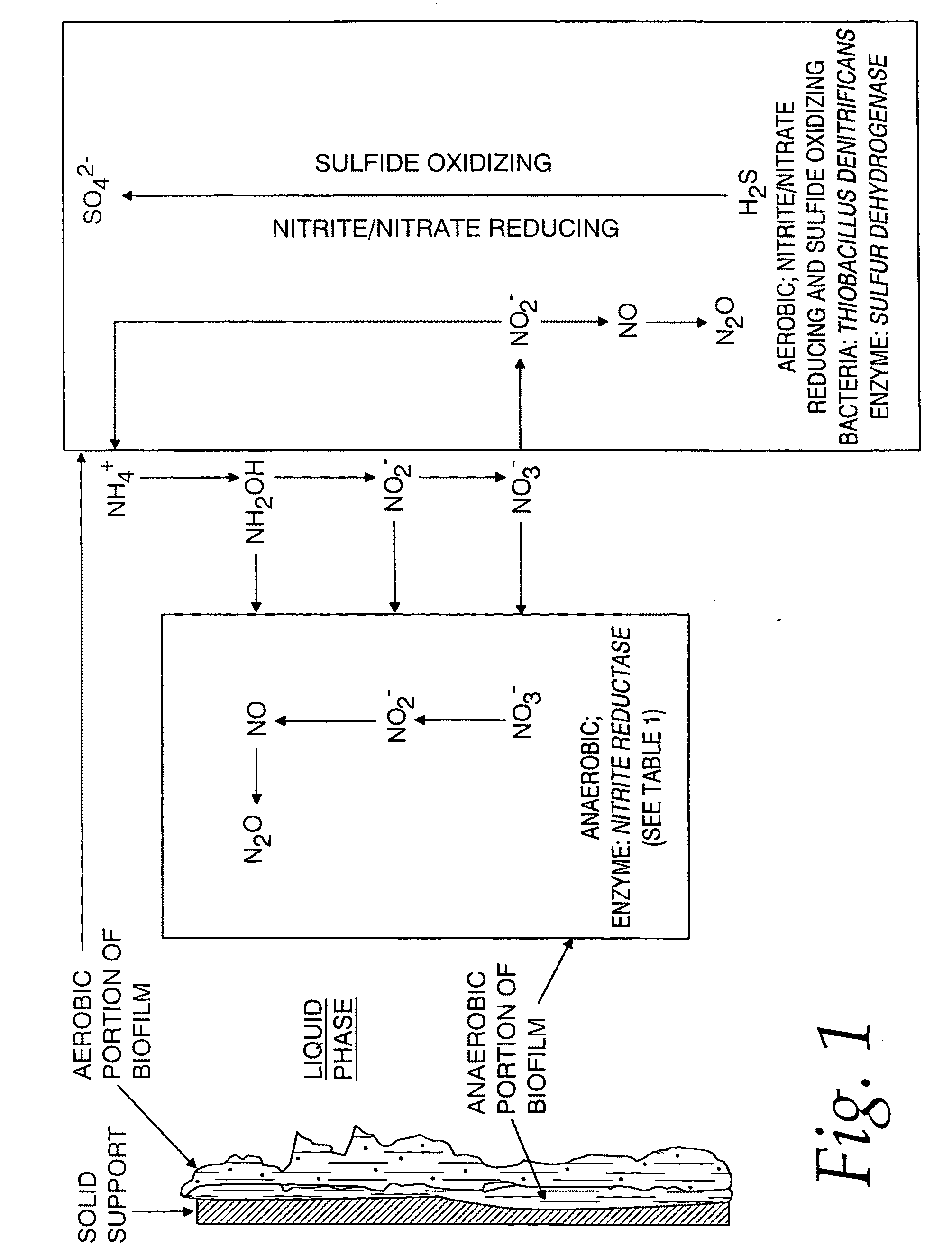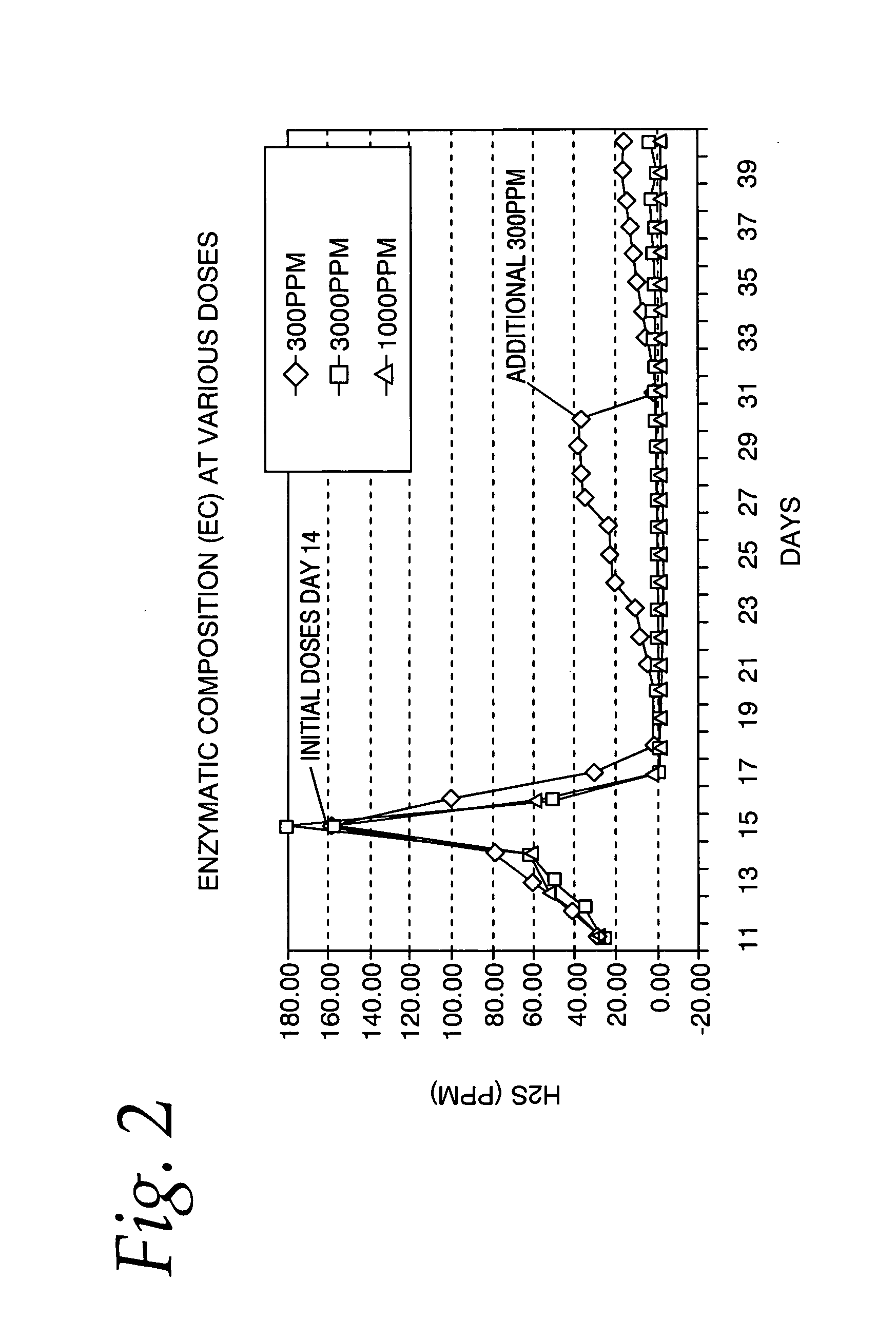Enzymatically active compositions for suppressing sulfide generation and methods of use thereof
a technology of sulfide generation and composition, applied in the field of enzymematically active compositions, can solve the problems of limiting the practicality of microbe-based treatments, biofilm dispersal, and significant undesirable characteristics and effects, and achieve the effect of reducing sulfide production
- Summary
- Abstract
- Description
- Claims
- Application Information
AI Technical Summary
Benefits of technology
Problems solved by technology
Method used
Image
Examples
example 1
[0042]A mixed bacterial culture, having ATCC Accession No. PTA-8448, was grown in a modified Coleville Synthetic Brine (mCSB), containing about 12 mM sodium sulfate, about 30 mM sodium lactate and about 10 mM sodium nitrate. After the strain CVO has grown for about 4 days, the bacterial growth was terminated by adding about 100 ppm of sodium nitrite, and then passing the mixture through a cellulose acetate reverse osmosis membrane (H1312-075 / K / C, Osmonics, Livermore, Calif.) to remove about 98% of the water, leaving behind a concentrated, enzymatically active mixture of culture containing inorganic salts. The so-obtained concentrated mixture was then dried in an oven maintained at about 55° C. to form a powder.
[0043]The mixed bacterial culture utilized in this Example was deposited, with the American Type Culture Collection (ATCC; Manassas, Va.) on May 23, 2007, under the provisions of the Budapest Treaty, and was assigned ATCC Accession Number PTA-8448.
[0044]ATCC Culture No. PTA-84...
example 2
[0047]Laboratory studies were conducted by growing cultures of Desulfovibrio vulgaris, available from NCIMB Ltd, Aberdeen, Scotland, UK as NCIMB 8303 (see Postgate, J. R., The Sulfate-Reducing Bacteria, 2nd Ed., Cambridge University Press, Cambridge; 1984) in 100 mL aliquots of mCSB containing 12 mM sodium sulfate, 30 mM sodium lactate and 10 mM sodium nitrate in one-liter serum bottles sealed with butyl rubber stoppers, which were flushed with nitrogen and autoclaved at about 120° C. prior to use. A 2% inoculum of freshly prepared D. vulgaris culture was added to the medium in each bottle and incubated at about 30° C. Each culture was grown to mid-log phase to achieve a sulfide concentration of about 12.2±1.4 mM before adding about 25 mL of an aqueous 100 ppm solution of the enzymic composition of Example 1 to each culture. Each culture was then sparged with 99.99% pure nitrogen gas and the pH was adjusted to 6.4 using a dilute solution of nitric acid. The sulfide concentration in ...
example 3
[0049]The enzymatically active composition of Example 1 was evaluated for effectiveness at controlling the odor of an industrial metal working fluid at a commercial metal working facility, which is generally operated at a pH of about 8.0. A freshly prepared metal working sump was used in the test, and was evaluated for the presence of SRB using a commercially available test kit (SANI-CHECK™ SRB) from BioSan Laboratories Inc. The test kit indicated that the level of sulfate reducer per mL of fluid was greater than or equal to 1000, which is in the low to moderate range for metal working fluids. The sump smelled of ‘rotten eggs’, which indicated the presence of hydrogen sulfide gas produced by SRB. After the addition of a single application of about 300 ppm of the composition of Example 1, the odor from the sump went away within about 24 hours and did not return during the three month test period. No SRB was detected in the fluid using the Sani-Check SRB test kit after one week, one m...
PUM
| Property | Measurement | Unit |
|---|---|---|
| body weight | aaaaa | aaaaa |
| concentration | aaaaa | aaaaa |
| weight | aaaaa | aaaaa |
Abstract
Description
Claims
Application Information
 Login to View More
Login to View More - R&D Engineer
- R&D Manager
- IP Professional
- Industry Leading Data Capabilities
- Powerful AI technology
- Patent DNA Extraction
Browse by: Latest US Patents, China's latest patents, Technical Efficacy Thesaurus, Application Domain, Technology Topic, Popular Technical Reports.
© 2024 PatSnap. All rights reserved.Legal|Privacy policy|Modern Slavery Act Transparency Statement|Sitemap|About US| Contact US: help@patsnap.com










